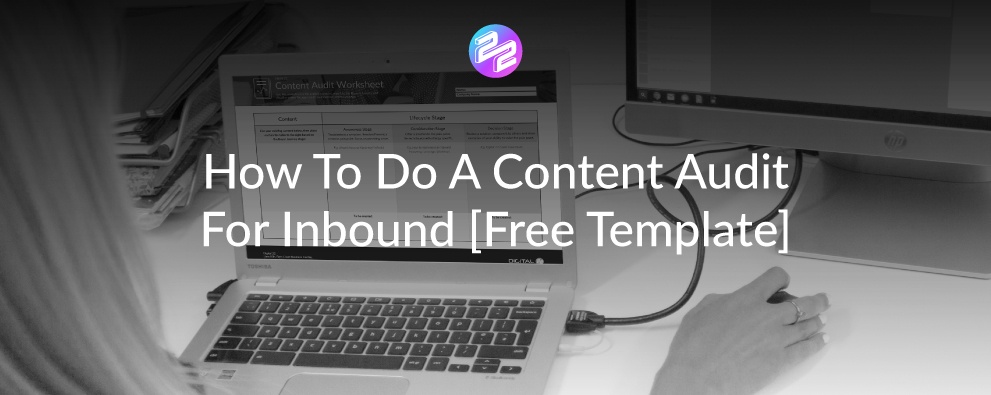When creating an inbound strategy, it's important you do a content audit to help you identify what...
Creating a few different templates for emails, blogs and pages can make your life a whole lot easier down the line. They’re a great foundation for the content you produce and the actual process of creating them on HubSpot is nice and straightforward. Here’s a quick rundown of how to make and import templates and a few best practices for good measure too.
Creating templates on HubSpot
HubSpot’s handy content modules and layout editor do most of the hard work when it comes to creating a new template.
- Go to Marketing > Files and Templates > Design Tools when logged into your HubSpot account.
- Click File > New File to start creating your new template.
- Once the dialog box pops up, choose Drag and drop - it should be the first box in the list.
- You’ll then be able to choose the type of template you want to create from a dropdown list. Blog, email and page are the three you’ll use the most but there are some other system options that include pages for password prompt and email subscriptions.
- Decide on a name for your file and where you want to save it and then you’re ready to hit Create.
Importing an existing template
You might already have a template that you want to import into HubSpot. To do this:
- Again, go to Marketing > Files and Templates > Design Tools.
- Click File > New File like before.
- When the dialog box pops up, instead of clicking Drag and drop, choose HTML & HUBL.
- You’ll then be given the same type of template choice as before but this time, you’ll be able to paste in the HTML of your existing template after you’ve hit Create.
Template best practices
Before we jump in, it’s worth keeping in mind that the right thing to do with your templates depends on what they’re being used for. A rule for an email template probably isn’t going to apply to blog templates as well.
Also, the type of audience you’re trying to reach has a big impact on your templates. What works for one business might fail for another because the people they’re marketing to are so different.
Having said all that, here are a few best practices that’ll lead to template-related success.
Use your images sparingly
There’s always that temptation to make your blogs and landing page templates as breathtakingly beautiful as possible when you’re creating them. Even though those stock images are perfect, they’re actually hurting the performance of your emails and landing pages.
The more images you include, the more likely email clients will flag your perfectly crafted email as spam. You didn’t go to all that effort just to end up in someone’s junk folder. Use images very sparingly and focus more on the actual content.
Create a mobile-friendly template
It’s vital your templates are suitable for mobile devices as smartphones are now the preferred choice for both internet browsing and email reading. Bear in mind that if your email is broken or poorly designed in any way, then they’re usually deleted by users within the first three seconds of opening. Ouch.
Making sure everything is mobile-friendly is a good habit to get into. Check that your landing pages, emails, blogs and websites all look their absolute best on every kind of smartphone. Otherwise, you’ll find your frustrated users head elsewhere.
Don’t confuse the user
Whether your templates are for emails or landing pages - they’ll have a purpose. The aim is probably to get the user to fill out a form and enter their contact details. They’ll get something for their trouble and you’ll receive valuable data.
Never forget that this is the aim. There should be only one purpose and one message. It’s easy to be distracted by images, video and other bells and whistles but this can confuse the user. They end up not being exactly sure what it is they’re supposed to be doing.
Test, test and test a bit more
Don’t stop at one template. Make two and test them out to see which is better. Keep testing them to see which work well and which don’t. Carrying out A/B testing can help you to refine your processes and create content that your audience engages with.
If you’ve had a campaign that’s been a challenge, make sure to set aside time to understand why and what can be improved in the future. Similarly, if you’ve had a resounding success, carry out the same analysis to increase the chances of you replicating it in the future.
Add video
If you’re not on the inbound video train yet, then why not? Conversion rates on landing pages and emails skyrocket when there’s a relevant and engaging video waiting for users. Think about the inclusion of video when you’re creating your template.
The layout is very important. Many marketers swear by the inverted pyramid method. Larger content like images and video is at the top, copy is underneath and smaller forms and buttons at the bottom.
Creating email templates are just one of the steps you’ll be taking when you set up HubSpot. Importing your business data, sorting out forms and setting up the Sales Hub are some of the things you’ll need to do. It’s easy to feel like that’s a lot to do so to make things a little easier, we've created a free guide to setting up HubSpot.
How’s your HubSpot doing?
There’s a lot to get your head around which is why you need the right tools. Whether you’re a new user that’s looking to set up HubSpot for the first time, or you’ve been using it for a while now but you want to double check you have all of the essentials in place, download our free guide now. It’s filled with useful tips and advice to make everything that little bit easier. Click the link below to grab yours now.


